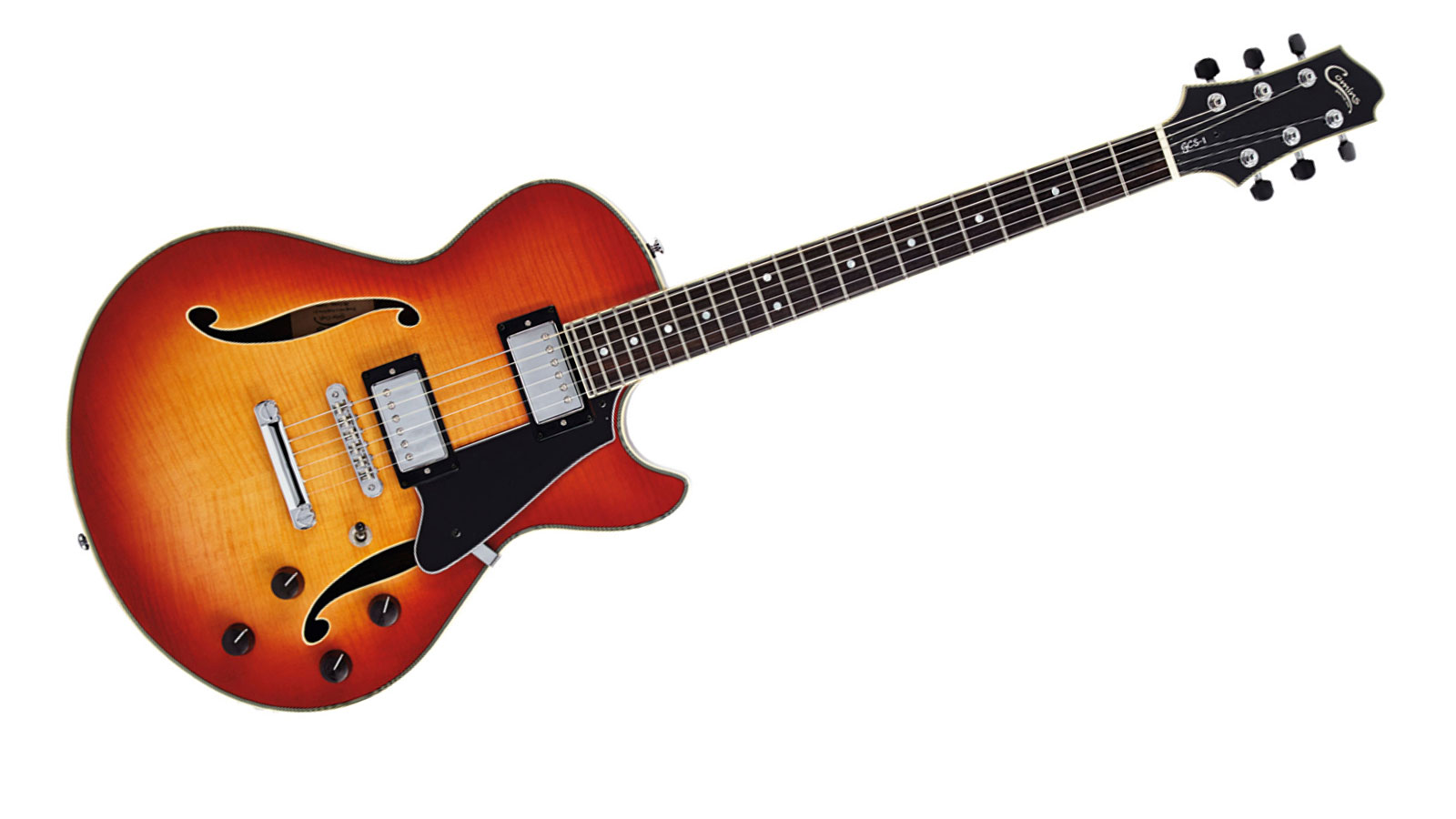MusicRadar Verdict
A perfect choice for the serious jazz/blues/fusion player. Beautifully crafted, too.
Pros
- +
Beautifully built. Fantastic jazz and blues tones.
Cons
- -
Expensive for a Korean build.
MusicRadar's got your back
Bill Comins is a top-flight USA luthier and the GCS-1, constructed in Korea, represents his first offshore venture.
Constructionally, it sits midway between the classic ES-335 and the modern solidwood-style of semi-acoustics like the PRS SE Zach Myers. So, we get a solidwood centre section routed out to leave a full-length centre block and plenty of air in the lower bouts. Above the tip of the two f holes, however, it's all solid.
"It's a well thought-through design with a good weight and enough bulk for a seated jazz player"
Both the back and top are laminated, and faced with mahogany and figured maple veneers respectively. Edges are bound top and back, as are the f-holes, and while all our samples have an arched top, this is the only one with an arched back.
The control layout is close to the classic Gibson recipe, but both 'buckers can be simultaneously coil-split - voicing the neck-facing single coils of each - via a pull-push on the neck pickup's tone control.
Those wooden control knobs, with clear position markers, add some boutique class that's mirrored by the faux ebony buttons of the Wilkinson tuners.
Its three-a-side headstock has a modern-but-classic shape, and its understated looks are supported by simple dot inlays on the very clean 'board. It's a well thought-through design with a good weight and enough bulk for a seated jazz player.
Sounds
With a glorious new Gibson ES-335, a more hollow and lighter-weight PRS Singlecut Hollowbody, and a few other semis, as references we warmed up our test amps. Any guitar that gets close to those benchmarks is going to be good. We weren't disappointed.
There's a little more 'tuxedo' to the Comins. There's a richness to the clean tones, and 'home' might be the neck humbucker, especially cleaned with some volume roll-off. The single-coil mode is useful, too, and there's plenty of jangle here - with crunchier sounds that work well, though the bridge pickup is a little too open for tougher rhythm styles.
At the higher end of gain settings, it doesn't sound as convincing as other semis we've revived lately, for example, the LTD Xtone PC-1V. We prefer this lower-gained, although it handles volume well. It's also a very comfortable guitar seated or standing.
The Comins seems tailored more to the jazz/blues player who doesn't need rockier sounds. But as a jazz/fusion guitar for the serious musician it not only looks the part but sounds it, too.
Dave Burrluck is one of the world’s most experienced guitar journalists, who started writing back in the '80s for International Musician and Recording World, co-founded The Guitar Magazine and has been the Gear Reviews Editor of Guitarist magazine for the past two decades. Along the way, Dave has been the sole author of The PRS Guitar Book and The Player's Guide to Guitar Maintenance as well as contributing to numerous other books on the electric guitar. Dave is an active gigging and recording musician and still finds time to make, repair and mod guitars, not least for Guitarist’s The Mod Squad.
“A synthesizer that is both easy to use and fun to play whilst maintaining a decent degree of programming depth and flexibility”: PWM Mantis review
“I feel like that song had everything we needed to come back with”: Bring Me The Horizon’s Lee Malia on Shadow Moses, its riff and the secrets behind its tone, and why it was the right anthem at the right time
“I said, ‘Are we sure we can write a song about death?’”: The story of Mike + The Mechanics' classic No.1 The Living Years











